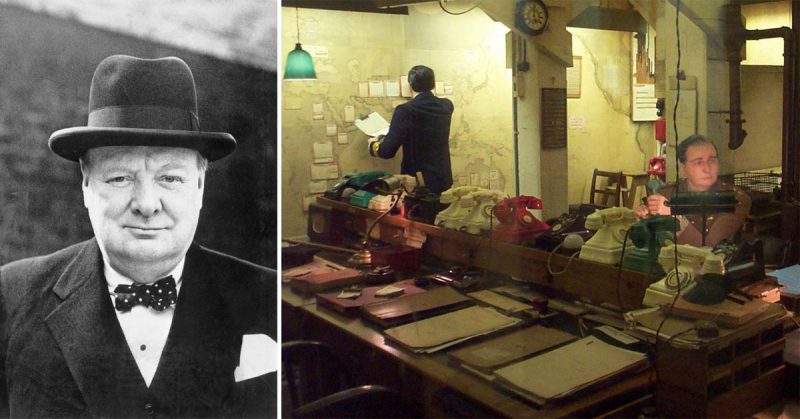For someone who disliked the War Rooms during the Second World War, Sir Winston Churchill nevertheless carried on at winning the six-year conflict.
Located only one yard beneath Whitehall, near Buckingham Palace in Central London, the complex has 70 rooms. Four of these are the most memorable, the Cabinet and Map Rooms, the telephone room, and Churchill’s bedroom and study. These comprise the cabinet war rooms. From here, Churchill orchestrated Britain’s part in the defeat of Nazi Germany.
Opened to the public in 1985, all is enclosed behind glass. But Jonathan Asbury’s book, The Secrets of Churchill’s War Rooms, history buffs get a closer look at the location where history was made. Secret document and photos from files held in the archives of the Imperial War Museum, released for the first time, assisted Asbury with his book.
The cabinet war rooms were constructed in 1939 and vacated in the summer of 1945 following Japan’s surrender.
The Secrets of Churchill’s War Rooms clarifies the Map Room’s workings, where Army, RAF and Royal Navy officers marshalled intelligence and recorded the terrible toll of casualties in chalk on a blackboard.
Asbury, 45, said what particularly impressed him was the similarity between Churchill’s personality and the War Rooms proper, and the general idea of inventiveness. Churchill almost never slept a night in his bed, so intense was his dislike of being underground.
There was a real gung-ho attitude, and these people were very effective at meeting goals. The people there defying the bombs and sleeping with the bugs and rats were a substantial part of this past. And Churchill furnished this rousing energy for the entire complex.
The Cabinet War Rooms has four main rooms – Churchill’s bedroom and study, the telephone room, the Map Room and the Cabinet Room.
The Map Room, not unsurprisingly, had maps showing the war’s progress in the major theaters of war –initially North Africa, the Eastern Front, Asia, and, later, France, Italy, and eventually Germany.
The Cabinet Room was where Churchill and the Admirals, top generals, and wing commanders would have energetic discussions about the conduct of the conflict, Mail Online reported.
There is a photograph in the book of the Map Room, possibly taken in 1942, three years after the start of the war. When the war ended in 1945, it was abruptly deserted. Churchill left his study virtually untouched when the war concluded.
He liked being able to show maps to visiting senior officers. That showed Britain was aware of events. Then he would take the officers to his study for a drink, Asbury explained.
